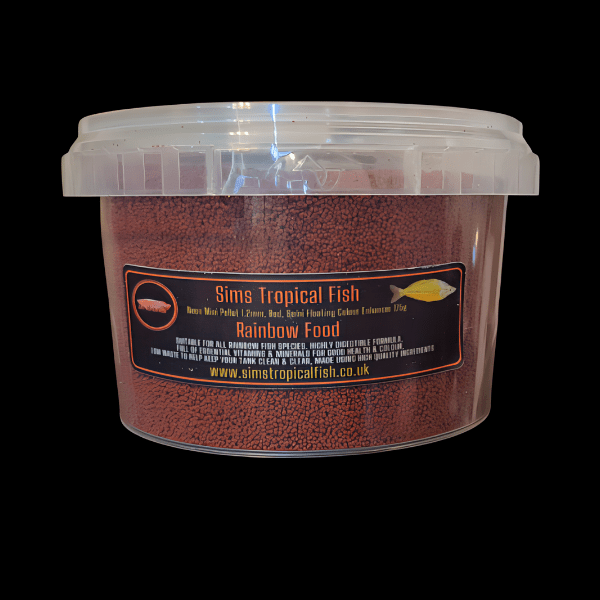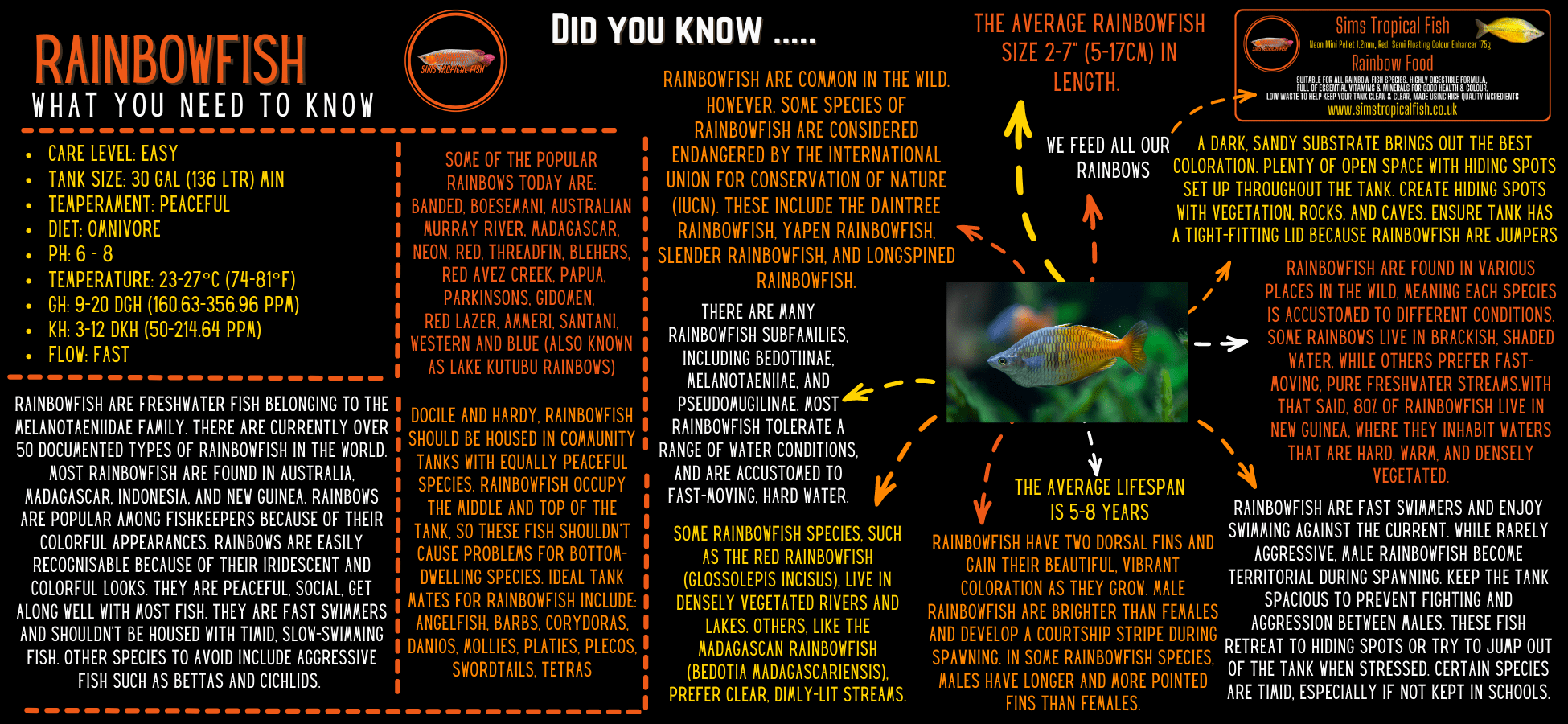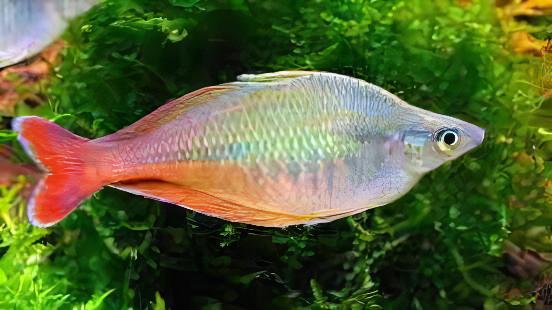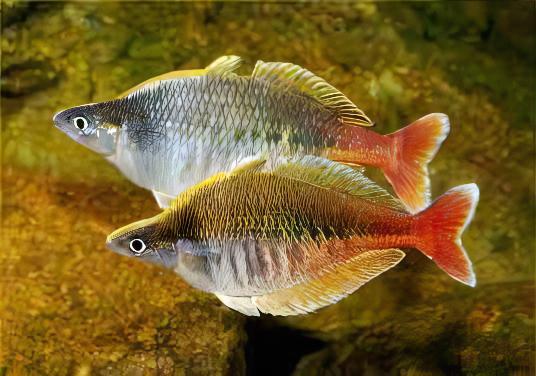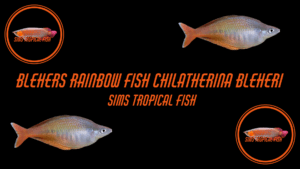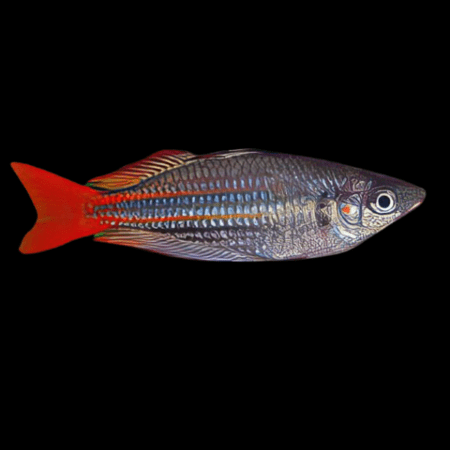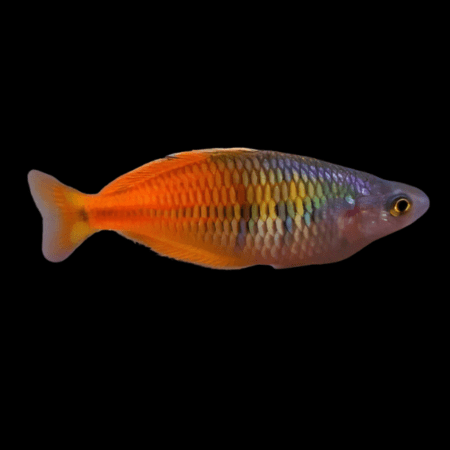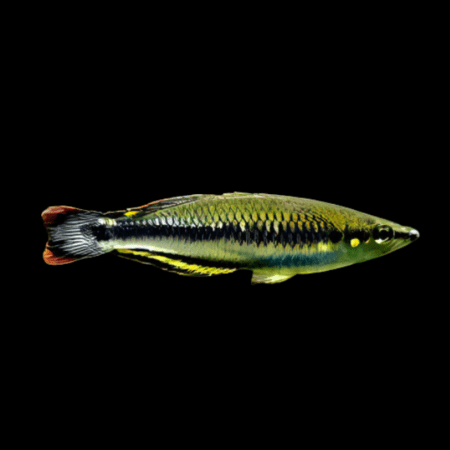Description
Blehers Rainbow Fish Chilatherina Bleheri
Overview
Synonyms: None
Distribution: Irian Jaya, Indonesia.
Maximum Size: 12cm (4.7″)
Temperature: 23-27°C
Water Parameters: Will acclimatise to a wide range of conditions. pH: 6.8-7.8, dH: up to 18 degrees.
Compatibility: Community
Lighting: No special requirements
Sexual Dimorphism: Mature males are larger and much more colourful; females lack the red colouration and are more of a plain silvery green. Males also display a yellow breeding stripe on the forehead when in breeding dress.
Feeding: Flake, granules and frozen foods
Description
Care
Bleher’s Rainbowfish are known from Lake Holmes (Danau Bira), a complex of three interconnected, relatively shallow, freshwater lakes lying within a radius of 6-7km and which form part of the Mamberamo basin in Irian Jaya. These fish have been found in the vegetated shorelines and rocky feeder streams of the lake, which is situated some 430m above sea level in the foothills of the remote van Rees Mountains. Bleher’s Rainbowfish are a peaceful species, ideally suited to community aquaria. These beautiful fish should be maintained in groups of 6 or more due to their shoaling nature. The aquarium should be fairly spacious, as this is an active species. The juveniles of many rainbowfish species can often look a little drab compared to the adults, and as such are sometimes overlooked in the shops. However, the males of this species are actually fairly colourful even as juveniles, and once settled into the security of the planted aquarium, these young specimens will begin to colour up furthermore, revealing their stunning adult beauty. Bleher’s Rainbowfish will not bother smaller tankmates, as their mouth/throat is too narrow to be able to swallow them. This species is occasionally seen in the shops, and is well worth looking out for on account of its peacefulness, beauty, and ease of maintenance. Unfortunately, C. bleheri is listed as Vulnerable on the IUCN red list, largely due to the introduction of predatory carp and tilapia into their native habitat. The vast majority of the fish seen in the trade will be captive bred (the pictured specimen was bred in the Czech Republic).
Feeding
Flake, green flake, micropellets, and small frozen foods such as mosquito larvae and daphnia.
Breeding
A separate good-sized breeding aquarium should be set up with 75% mature tank water and 25% of dechlorinated fresh water, along with a substrate of marbles. A small air-driven sponge filter (with a mature sponge) should be added to give gentle circulation and filtration. A conditioned pair should then be acclimatised across to the breeding aquarium, which should be furnished with plenty of fine-leaved plants/Java moss clumps. After a time, the male will swim in front of the female, displaying the mating stripe on his forehead. He will then begin to drive the female over the plants, utilising the whole length of the tank. The eggs will be scattered over the plants a few at a time. These fish are known as ‘continual spawners’ which means that the spawning activity takes place over several days/weeks, even months in some cases. This can present problems to the aquarist in that some adult fish may begin to consume the eggs as they are scattered. Many fishkeepers have found the eggs to be remarkably tough and have had great success in siphoning them out into another aquarium (containing matching water from the spawning tank) or else using spawning mops, which, when having caught a number of the eggs, can be moved to a separate tank (again with matching water) and replaced with a new mop, as and when each series of eggs are deposited. The eggs will usually hatch in 7-9 days (dependent on temperature) and once free-swimming, the tiny fry can be offered infusoria, moving onto larger foodstuffs as they develop.

